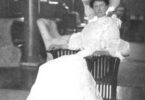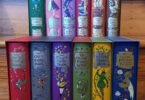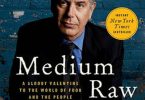The American literary landscape was forever changed by the brave collection of artists who used their chosen mediums to claim their voices during the Harlem Renaissance. The arts have always been a powerful way to speak against negative stereotypes and document the lives of previously silenced populations. Collectively, the artists of the Harlem Renaissance positively changed the way the world viewed African Americans and influenced culture, even today.
Below is a collection of important works by a few of the key voices of that era.
Spring in New Hampshire (1920)
by Claude McKay
Claude McKay was born in 1889 in Jamaica. Although he had published two previous volumes of poetry, Songs of Jamaica and Constab Ballads in 1912, Spring in New Hampshire: And Other Poems is often considered his debut and seminal work. The collection was published in London before McKay’s return to the United States. It includes such poems as “Harlem Dancer” and “Lynching.” All but five of the thirty-one poems in this collection were reprinted in full in Harlem Shadows (1922). McKay was a pivotal writer of the Harlem Renaissance. His poem, “If We Must Die” was recited in the film August 28: A Day in the Life of a People, which debuted at the opening of the Smithsonian’s National Museum of African American History and Culture in 2016. In addition to poetry, he published four novels in his lifetime, including Home to Harlem (1928).

Color (1925) by Countee Cullen
Countee Cullen was one of the most notable voices of the Harlem Renaissance. He was born in 1903 and orphaned at a young age. He was taken in by a well-known Harlem preacher after his grandmother passed away as well. His first book, Color, is a collection of seventy-four poems that was published when he was twenty-two years old, shortly after Cullen was accepted into Harvard’s master’s program. Cullen had a close relationship with scholar W.E.B. DuBois and married his daughter Yolande in 1928. The marriage was the event of the decade in Harlem, but it ended quickly.

The Weary Blues (1926) by Langston Hughes
Langston Hughes was a giant of the Harlem Renaissance, and his poetry set the tone for popular verse for decades. Born in Missouri in 1902, The Weary Blues was his first book, published by Alfred A. Knopf in 1926. The title poem “The Weary Blues” was first published in Opportunity magazine and was awarded poem of the year in 1925 for that publication. This collection also includes Hughes’ poem “The Negro Speaks of Rivers” which is one of his best-known and most celebrated works. After Hughes died in 1972 his ashes were interred at the Schomburg Center for Research in Black Culture in Harlem, under a cosmogram by Houston Conwill entitled “Rivers” that includes the line from the poem: “My souls has grown deep like the rivers.”
Southern Road (1932) by Sterling Allen Brown
First published in 1932 by Harcourt, Brace & Co., Southern Road was the first published book by poet and professor Sterling Allen Brown. Brown was born in 1901 on the campus of Howard University where his father was a minister and professor. Brown himself later became a professor at the University and the first poet laureate of Washington, DC. Although he did not live in Harlem, Brown is considered an influential voice in the Harlem Renaissance. Unlike many other poetry collections during this time, Southern Road had a decidedly rural theme.
Black Man’s Verse (1935) by Frank Marshall Davis
Born in Kansas in 1905, Frank Marshall Davis was a journalist, poet, activist, and businessman. His poetry was sponsored by the Works Progress Administration under President Franklin D. Roosevelt’s New Deal programs. Davis lived in Chicago in the 1930s and was part of the Black Chicago Renaissance along with Richard Wright and Margaret Walker. Black Man’s Verse was his first book, published by Black Cat Press in Chicago in 1935. In recent years Davis has been mentioned by right-wing conspiracy theorists as a ‘Communist Mentor’ to President Barack Obama, a movie even made speculating the Davis was Obama’s father.

For My People (1942) by Margaret Walker
The poet and novelist Margaret Walker was born in 1915 in Birmingham, Alabama. Her first book, For My People, won the Yale Younger Poets award. She was the first black woman to win this prestigious award.

The Book of American Negro Poetry (1922)- edited by James Wheldon Johnson
Born in 1871 in Jacksonville, Florida, James Wheldon Johnson was a writer and political activist. He is best known for writing the lyrics to “Lift Ev’ry Voice and Sing” and the novel The Autobiography of an Ex-Colored Man (1912). In the 1920s Johnson moved to Harlem and in addition to working as the executive secretary for the NAACP, he also worked to promote the work of black artists during the Harlem Renaissance.
The Book of American Negro Poetry, compiled by Johnson and first published by Harcourt, Brace, and Company in 1922, features the work of Langston Hughes, Countee Cullen, Sterling A. Brown, Arna Bontemps & several other important poets of the Harlem Renaissance.

Negro Poets and Their Poems (1923) – edited by Robert Thomas Kerlin
An early anthology in the Harlem Renaissance, this book includes works by Paul Laurence Dunbar, James Wheldon Johnson, W.E.B. DuBois, Langston Hughes, Richard Wright, Frank Marshall Davis, Margaret Walker, and was illustrated by Meta Warrick Fuller. This volume had multiple reprints; the first printing was in green cloth, published in 1923 by Associated Publishers, Inc. in Washington, D.C.
Historian Carter G. Woodson founded the Associated Publishers, Inc. in 1920 to help publish his own works and also those of fellow black scholars. They published more than 200 works before closing their doors in 2005. Robert Thomas Kerlin was an American educator, minister, and Civil Rights activist.
Amy C. Manikowski is a writer living in Asheville, NC.







